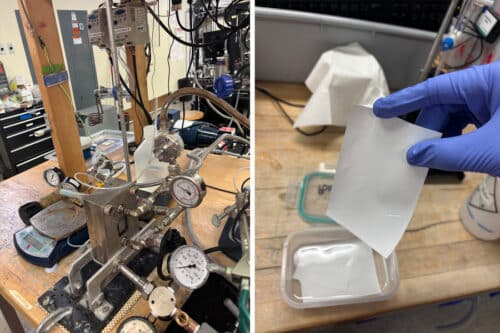MIT engineers have developed a nanofiltration process that promises to boost aluminum production efficiency and cut down on hazardous waste.

Credits:Photo: Trent Lee
MIT engineers have developed a nanofiltration process to reduce waste from aluminum production by capturing aluminum ions from effluent streams, which can then be upcycled to increase yield and minimize waste. Lab experiments with a membrane demonstrated its ability to capture over 99% of aluminum ions from solutions resembling aluminum plant waste streams. If scaled up for use in production facilities, this technology could reduce aluminum waste and improve the quality of plant emissions.
A recycling niche
Research group at MIT focuses on developing membrane and filtration technologies for desalinating seawater and treating wastewater. Exploring new applications for their work, the team identified an opportunity in aluminum production, specifically in addressing the wastewater generated during the process.
Aluminum production begins with mining bauxite, a metal-rich ore, which undergoes chemical reactions to extract aluminum, producing aluminum oxide in a powder form called alumina. This alumina is transported to refineries, where it is processed in electrolysis vats containing molten cryolite. An electric current breaks the chemical bonds in alumina, separating aluminum from oxygen atoms. The liquid aluminum settles at the vat’s bottom and is collected for casting. Over time, impurities like sodium, lithium, and potassium ions build up in the cryolite, reducing its efficiency. Once the impurity concentration becomes high, the electrolyte is replaced, and the spent cryolite, containing aluminum ions and impurities, is discarded as waste.
A charged kick
The researchers aimed to develop a membrane process to filter cryolite waste and recover aluminum ions from the waste stream while allowing other ions, such as sodium, to pass through. By selectively capturing aluminum, the team sought to return it to the electrolysis vat without introducing excess sodium, which slows the process. Their design adapts membranes used in water treatment plants, made from thin polymer sheets with nanometer-scale pores tuned to let through specific ions and molecules. These membranes carry a negative charge, repelling negatively charged ions and attracting positively charged ions to pass through.







